LL4148 Small Signal Diode: Diagram, Pinout, and Datasheet [Video&FAQ]
Standard Diode Rectifier Small Signal =< 200mA (Io), Any Speed 1V @ 10mA -55°C~175°C 25nA @ 20V Tape & Reel (TR) DO-213AC, MINI-MELF, SOD-80 Surface Mount









Standard Diode Rectifier Small Signal =< 200mA (Io), Any Speed 1V @ 10mA -55°C~175°C 25nA @ 20V Tape & Reel (TR) DO-213AC, MINI-MELF, SOD-80 Surface Mount
The LL4148 is a small Signal Diode for general use and is also suitable for many different applications. This article mainly introduces Diagram, Pinout, Datasheet and other detailed information about ON Semiconductor LL4148.

Diodes Explained - The basics how diodes work working principle pn junction
- LL4148 Description
- LL4148 Pinout
- LL4148 CAD Model
- LL4148 Features
- LL4148 Technical Specification
- Specifications
- Parts with Similar Specs
- LL4148 Marking Diagram
- LL4148 Order Information
- LL4148 Layout
- LL4148 Equivalent
- LL4148 Alternatives
- LL4148 Applications
- LL4148 Package
- LL4148 Manufacturer
- Trend Analysis
- Datasheet PDF
LL4148 Description
The LL4148 is a small Signal Diode for general use and also suitable for many different applications.
A diode is a semiconductor device that only enables current to flow in one direction. The current must always flow from the anode to the cathode. The LL4148 is a silicon epitaxial planar diode with a cathode band identification and is available in a glass container. It has a strong conductivity and a high level of dependability. The quick recovery time of this diode, which is only 8ns to 4ns at a forward current of 300mA, makes it ideal for applications requiring extremely fast switching. This diode is mostly used for extremely quick switching. The LL4148 is used in a variety of projects, such as heat monitoring, detecting the condition of an LED to operate another circuit, and so on.
LL4148 Pinout
The LL4148 Pinout is shown as follows.

Pinout
| Pin Number | Pin Name | Description |
| 1 | Anode | Current always Enters through Anode |
| 2 | Cathode | Current always Exits through Cathode |
LL4148 CAD Model
The followings are LL4148 Symbol, Footprint and 3D Model.

Symbol

Footprint

3D Model
LL4148 Features
• Silicon Epitaxial Planar Diode
• Electrical Data Identical with the Devices 1N4148 and 1N4448 Respectively
• AEC-Q101 Qualified
• VF = max. 1000 mV at IF = 50 mA
• 500mW Power Dissipation
• 300°C/W Junction-to-ambient Thermal Resistance
• 4pF at 1MHz Total Capacitance
• Fast Switching Speed
• Glass package version for high reliability
• Available in both Through-hole and Surface mount versions
• Conductance is also high
• PB free
• Rohs compliant
• Case: Mini MELF SOD-80 Glass Case
LL4148 Technical Specification
• Reverse Voltage: 100V
• Peak Forward Current: 500mA
• Power Dissipation: 500mW
• Forward voltage: 0.62V to 1V
• Reverse current: 5uA
• Diode Capacitance: 4pF
• Weight:
-DO-35: 0.13 grams
-MiniMELF: 0.05 grams
• Junction temperature: 175℃
• Storage temperature range: -65℃ to +175 ℃
Specifications
- TypeParameter
- Lifecycle Status
Lifecycle Status refers to the current stage of an electronic component in its product life cycle, indicating whether it is active, obsolete, or transitioning between these states. An active status means the component is in production and available for purchase. An obsolete status indicates that the component is no longer being manufactured or supported, and manufacturers typically provide a limited time frame for support. Understanding the lifecycle status is crucial for design engineers to ensure continuity and reliability in their projects.
ACTIVE (Last Updated: 1 day ago) - Factory Lead Time20 Weeks
- Contact Plating
Contact plating (finish) provides corrosion protection for base metals and optimizes the mechanical and electrical properties of the contact interfaces.
Tin - Mount
In electronic components, the term "Mount" typically refers to the method or process of physically attaching or fixing a component onto a circuit board or other electronic device. This can involve soldering, adhesive bonding, or other techniques to secure the component in place. The mounting process is crucial for ensuring proper electrical connections and mechanical stability within the electronic system. Different components may have specific mounting requirements based on their size, shape, and function, and manufacturers provide guidelines for proper mounting procedures to ensure optimal performance and reliability of the electronic device.
Surface Mount - Mounting Type
The "Mounting Type" in electronic components refers to the method used to attach or connect a component to a circuit board or other substrate, such as through-hole, surface-mount, or panel mount.
Surface Mount - Package / Case
refers to the protective housing that encases an electronic component, providing mechanical support, electrical connections, and thermal management.
DO-213AC, MINI-MELF, SOD-80 - Number of Pins2
- Supplier Device Package
The parameter "Supplier Device Package" in electronic components refers to the physical packaging or housing of the component as provided by the supplier. It specifies the form factor, dimensions, and layout of the component, which are crucial for compatibility and integration into electronic circuits and systems. The supplier device package information typically includes details such as the package type (e.g., DIP, SOP, QFN), number of pins, pitch, and overall size, allowing engineers and designers to select the appropriate component for their specific application requirements. Understanding the supplier device package is essential for proper component selection, placement, and soldering during the manufacturing process to ensure optimal performance and reliability of the electronic system.
SOD-80 - Weight4.535924g
- Packaging
Semiconductor package is a carrier / shell used to contain and cover one or more semiconductor components or integrated circuits. The material of the shell can be metal, plastic, glass or ceramic.
Tape & Reel (TR) - Published2013
- Part Status
Parts can have many statuses as they progress through the configuration, analysis, review, and approval stages.
Active - Moisture Sensitivity Level (MSL)
Moisture Sensitivity Level (MSL) is a standardized rating that indicates the susceptibility of electronic components, particularly semiconductors, to moisture-induced damage during storage and the soldering process, defining the allowable exposure time to ambient conditions before they require special handling or baking to prevent failures
1 (Unlimited) - Max Operating Temperature
The Maximum Operating Temperature is the maximum body temperature at which the thermistor is designed to operate for extended periods of time with acceptable stability of its electrical characteristics.
175°C - Min Operating Temperature
The "Min Operating Temperature" parameter in electronic components refers to the lowest temperature at which the component is designed to operate effectively and reliably. This parameter is crucial for ensuring the proper functioning and longevity of the component, as operating below this temperature may lead to performance issues or even damage. Manufacturers specify the minimum operating temperature to provide guidance to users on the environmental conditions in which the component can safely operate. It is important to adhere to this parameter to prevent malfunctions and ensure the overall reliability of the electronic system.
-55°C - Base Part Number
The "Base Part Number" (BPN) in electronic components serves a similar purpose to the "Base Product Number." It refers to the primary identifier for a component that captures the essential characteristics shared by a group of similar components. The BPN provides a fundamental way to reference a family or series of components without specifying all the variations and specific details.
LL4148 - Voltage
Voltage is a measure of the electric potential difference between two points in an electrical circuit. It is typically represented by the symbol "V" and is measured in volts. Voltage is a crucial parameter in electronic components as it determines the flow of electric current through a circuit. It is responsible for driving the movement of electrons from one point to another, providing the energy needed for electronic devices to function properly. In summary, voltage is a fundamental concept in electronics that plays a key role in the operation and performance of electronic components.
100V - Element Configuration
The distribution of electrons of an atom or molecule (or other physical structure) in atomic or molecular orbitals.
Single - Speed
In electronic components, "Speed" typically refers to the rate at which data can be processed or transferred within the component. It is a measure of how quickly the component can perform its functions, such as executing instructions or transmitting signals. Speed is often specified in terms of frequency, such as clock speed in processors or data transfer rate in memory modules. Higher speed components can perform tasks more quickly, leading to improved overall performance in electronic devices. It is an important parameter to consider when designing or selecting electronic components for specific applications.
Small Signal =< 200mA (Io), Any Speed - Current
In electronic components, "Current" refers to the flow of electric charge through a conductor or semiconductor material. It is measured in amperes (A) and represents the rate at which electric charge is moving past a specific point in a circuit. Current is a crucial parameter in electronics as it determines the amount of power being consumed or delivered by a component. Understanding and controlling current is essential for designing and operating electronic circuits efficiently and safely. In summary, current is a fundamental electrical quantity that plays a key role in the functionality and performance of electronic components.
2A - Diode Type
In electronic components, the parameter "Diode Type" refers to the specific type or configuration of a diode, which is a semiconductor device that allows current to flow in one direction only. There are various types of diodes, each designed for specific applications and functions. Common diode types include rectifier diodes, zener diodes, light-emitting diodes (LEDs), and Schottky diodes, among others. The diode type determines the diode's characteristics, such as forward voltage drop, reverse breakdown voltage, and maximum current rating, making it crucial for selecting the right diode for a particular circuit or application. Understanding the diode type is essential for ensuring proper functionality and performance in electronic circuits.
Standard - Current - Reverse Leakage @ Vr
Current - Reverse Leakage @ Vr is a parameter that describes the amount of current that flows in the reverse direction through a diode or other semiconductor component when a reverse voltage (Vr) is applied across it. This leakage current is typically very small, but it is important to consider in electronic circuits as it can affect the overall performance and reliability of the component. The reverse leakage current is influenced by factors such as the material properties of the semiconductor, temperature, and the magnitude of the reverse voltage applied. Manufacturers provide this parameter in datasheets to help engineers and designers understand the behavior of the component in reverse bias conditions.
25nA @ 20V - Power Dissipation
the process by which an electronic or electrical device produces heat (energy loss or waste) as an undesirable derivative of its primary action.
500mW - Voltage - Forward (Vf) (Max) @ If
The parameter "Voltage - Forward (Vf) (Max) @ If" refers to the maximum voltage drop across a diode when it is forward-biased and conducting a specified forward current (If). It indicates the maximum potential difference the diode can withstand while allowing current to flow in the forward direction without breaking down. This value is crucial for designing circuits as it helps determine how much voltage will be lost across the diode during operation. Higher Vf values can lead to reduced efficiency in power applications, making this parameter essential for optimizing circuit performance.
1V @ 10mA - Forward Current
Current which flows upon application of forward voltage.
200mA - Operating Temperature - Junction
Operating Temperature - Junction refers to the maximum temperature at which the junction of an electronic component can safely operate without causing damage or performance degradation. This parameter is crucial for determining the reliability and longevity of the component, as excessive heat can lead to thermal stress and failure. Manufacturers specify the operating temperature range to ensure that the component functions within safe limits under normal operating conditions. It is important for designers and engineers to consider the operating temperature - junction when selecting and using electronic components to prevent overheating and ensure optimal performance.
-55°C~175°C - Max Surge Current
Surge current is a peak non repetitive current. Maximum (peak or surge) forward current = IFSM or if(surge), the maximum peak amount of current the diode is able to conduct in forward bias mode.
2A - Voltage - DC Reverse (Vr) (Max)
Voltage - DC Reverse (Vr) (Max) is a parameter in electronic components that specifies the maximum reverse voltage that the component can withstand without breaking down. This parameter is crucial for components like diodes and transistors that are often subjected to reverse voltage during operation. Exceeding the maximum reverse voltage can lead to the component failing or getting damaged. Designers need to consider this parameter when selecting components to ensure the reliability and longevity of their circuits.
100V - Current - Average Rectified (Io)
The parameter "Current - Average Rectified (Io)" in electronic components refers to the average value of the rectified current flowing through the component. This parameter is important in determining the average power dissipation and thermal considerations of the component. It is typically specified in datasheets for diodes, rectifiers, and other components that handle alternating current (AC) and convert it to direct current (DC). Understanding the average rectified current helps in selecting the appropriate component for a given application to ensure reliable operation and prevent overheating.
200mA - Forward Voltage
the amount of voltage needed to get current to flow across a diode.
1V - Max Reverse Voltage (DC)
Max Reverse Voltage (DC) refers to the maximum voltage that a semiconductor device, such as a diode, can withstand in the reverse bias direction without failing. Exceeding this voltage can lead to breakdown and potential damage to the component. It is a critical parameter in circuit design to ensure reliability and prevent failure when the device is subjected to reverse voltage conditions.
100V - Average Rectified Current
Mainly used to characterize alternating voltage and current. It can be computed by averaging the absolute value of a waveform over one full period of the waveform.
200mA - Reverse Recovery Time
Reverse Recovery Time is a key parameter in semiconductor devices, particularly diodes and transistors. It refers to the time taken for a diode or transistor to switch from conducting in the forward direction to blocking in the reverse direction when the polarity of the voltage across the device is reversed. This parameter is crucial in applications where fast switching speeds are required, as a shorter reverse recovery time allows for quicker response times and improved efficiency. Reverse Recovery Time is typically specified in datasheets for electronic components and is an important consideration in circuit design to ensure optimal performance and reliability.
4 ns - Peak Reverse Current
The maximum voltage that a diode can withstand in the reverse direction without breaking down or avalanching.If this voltage is exceeded the diode may be destroyed. Diodes must have a peak inverse voltage rating that is higher than the maximum voltage that will be applied to them in a given application.
25nA - Max Repetitive Reverse Voltage (Vrrm)
The Max Repetitive Reverse Voltage (Vrrm) is a crucial parameter in electronic components, particularly in diodes and transistors. It refers to the maximum voltage that can be applied across the component in the reverse direction without causing damage. This parameter is important for ensuring the proper functioning and longevity of the component in circuits where reverse voltage may be present. Exceeding the Vrrm rating can lead to breakdown and failure of the component, so it is essential to carefully consider this specification when designing or selecting components for a circuit.
100V - Capacitance @ Vr, F
Capacitance @ Vr, F refers to the capacitance value of a capacitor measured at a specified rated voltage (Vr). It indicates how much electrical charge the capacitor can store per volt when subjected to this voltage. This parameter is essential for understanding the behavior of capacitors in circuits, particularly under different voltage conditions, and ensures that the component operates within its safe limits. The unit of measurement is Farads (F), which quantifies the capacitor's ability to hold an electrical charge.
4pF @ 0V 1MHz - Peak Non-Repetitive Surge Current
Peak Non-Repetitive Surge Current is a specification in electronic components that refers to the maximum current that the component can withstand for a short duration without sustaining damage. This surge current typically occurs as a result of sudden voltage spikes or transient events in the circuit. It is important to consider this parameter when designing or selecting components to ensure they can handle occasional high-current surges without failing. The value of Peak Non-Repetitive Surge Current is usually specified in amperes and is crucial for protecting the component and maintaining the overall reliability of the circuit.
2A - Reverse Voltage
the voltage drop across the diode if the voltage at the cathode is more positive than the voltage at the anode
100V - Max Forward Surge Current (Ifsm)
Max Forward Surge Current (Ifsm) is a parameter used to specify the maximum peak current that a diode or other electronic component can withstand for a short duration during a surge event. Surge currents can occur due to sudden changes in voltage or power supply fluctuations, and the Ifsm rating helps determine the component's ability to handle such transient overloads without being damaged. It is important to consider the Ifsm rating when selecting components for applications where surge currents are expected, such as in power supplies, motor drives, and other high-power circuits. Exceeding the Ifsm rating can lead to overheating, degradation, or failure of the component, so it is crucial to ensure that the chosen component can safely handle the expected surge currents in the circuit.
2A - Recovery Time
Recovery time in electronic components refers to the time it takes for a device to return to its normal operating state after being subjected to a specific stimulus or disturbance. This parameter is particularly important in devices such as diodes, transistors, and capacitors, where the recovery time can impact the overall performance and reliability of the component. A shorter recovery time indicates that the component can quickly recover from a transient event, ensuring proper functionality and minimizing any potential disruptions in the circuit. Manufacturers typically provide recovery time specifications to help engineers and designers select components that meet the requirements of their specific applications.
4 ns - Height1.5mm
- Length3.6mm
- Width1.5mm
- REACH SVHC
The parameter "REACH SVHC" in electronic components refers to the compliance with the Registration, Evaluation, Authorization, and Restriction of Chemicals (REACH) regulation regarding Substances of Very High Concern (SVHC). SVHCs are substances that may have serious effects on human health or the environment, and their use is regulated under REACH to ensure their safe handling and minimize their impact.Manufacturers of electronic components need to declare if their products contain any SVHCs above a certain threshold concentration and provide information on the safe use of these substances. This information allows customers to make informed decisions about the potential risks associated with using the components and take appropriate measures to mitigate any hazards.Ensuring compliance with REACH SVHC requirements is essential for electronics manufacturers to meet regulatory standards, protect human health and the environment, and maintain transparency in their supply chain. It also demonstrates a commitment to sustainability and responsible manufacturing practices in the electronics industry.
No SVHC - Radiation Hardening
Radiation hardening is the process of making electronic components and circuits resistant to damage or malfunction caused by high levels of ionizing radiation, especially for environments in outer space (especially beyond the low Earth orbit), around nuclear reactors and particle accelerators, or during nuclear accidents or nuclear warfare.
No - RoHS Status
RoHS means “Restriction of Certain Hazardous Substances” in the “Hazardous Substances Directive” in electrical and electronic equipment.
ROHS3 Compliant - Lead Free
Lead Free is a term used to describe electronic components that do not contain lead as part of their composition. Lead is a toxic material that can have harmful effects on human health and the environment, so the electronics industry has been moving towards lead-free components to reduce these risks. Lead-free components are typically made using alternative materials such as silver, copper, and tin. Manufacturers must comply with regulations such as the Restriction of Hazardous Substances (RoHS) directive to ensure that their products are lead-free and environmentally friendly.
Lead Free
Parts with Similar Specs
- ImagePart NumberManufacturerMountForward VoltageAverage Rectified CurrentCurrent - Average Rectified (Io)Reverse Recovery TimeRecovery TimeMoisture Sensitivity Level (MSL)Capacitance @ Vr, FView Compare
LL4148
Surface Mount
1 V
200 mA
200mA
4 ns
4 ns
1 (Unlimited)
4pF @ 0V, 1MHz
Surface Mount
1 V
200 mA
-
4 ns
4 ns
1 (Unlimited)
4pF @ 0V, 1MHz
Surface Mount
1 V
150 mA
150mA
4 ns
4 ns
1 (Unlimited)
4pF @ 0V, 1MHz
Surface Mount
1 V
200 mA
200mA
4 ns
4 ns
1 (Unlimited)
4pF @ 0V, 1MHz
LL4148 Marking Diagram
The following shows LL4148 Marking Diagram.
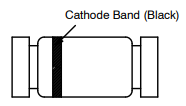
Marking Diagram
LL4148 Order Information
The LL4148 Order Information is shown as follows.

Order Information
LL4148 Layout
The following shows LL4148 Layout.

Layout
LL4148 Equivalent
BAS32, 1N4148, 1N4448, 1N4154
LL4148 Alternatives
| Part Number | Description | Manufacturer |
| DL4148DIODES | Rectifier Diode, 1 Element, 0.15A, 75V V(RRM), Silicon, MINIMELF-2 | Micro Commercial Components |
| FDLL4148_NLDIODES | Rectifier Diode, 1 Element, 0.2A, 100V V(RRM), Silicon, DO-213AC, LL-34, 2 PIN | Fairchild Semiconductor Corporation |
| 933930220135DIODES | 0.2A, 100V, SILICON, SIGNAL DIODE, HERMETIC SEALED, GLASS, SMD, 2 PIN | NXP Semiconductors |
| LL4148-CDIODES | Rectifier Diode, 1 Element, 0.15A, 100V V(RRM), Silicon, HALOGEN AND LEAD FREE, HERMETIC SEALED, GLASS, MINIMELF-2 | Secos Corporation |
| LL4148-T1-LFDIODES | Rectifier Diode, 1 Element, 0.15A, 75V V(RRM), Silicon, ROHS COMPLIANT, GLASS, MINIMELF-2 | Won-Top Electronics Co Ltd |
| JANTXV1N4148UR-1DIODES | DIODE 0.2 A, SILICON, SIGNAL DIODE, Signal Diode | Defense Supply Center Columbus |
LL4148 Applications
• Extreme Fast Switches
• Signal Processing
• Can Be Used to Prevent Reverse Polarity Problem
• Protect Power Electronic Switches That are Operating with High Switching Frequency
• Used As a Protection Device
• Current Flow Regulators
LL4148 Package
The following figure is LL4148 Package.

Package
LL4148 Manufacturer
ON Semiconductor ( Nasdaq : ON) is a leader in energy efficiency, enabling clients to cut worldwide energy consumption. To assist design engineers in solving their unique design challenges in automotive, communications, computing, consumer, industrial, LED lighting, medical, military/aerospace, and power supply applications, the company offers a comprehensive portfolio of energy efficient power and signal management, logic, discrete, and custom solutions. ON Semiconductor has a world-class supply chain and quality program, as well as a network of manufacturing sites, sales offices, and design centers in important markets across North America, Europe, and Asia Pacific.
Trend Analysis
Datasheet PDF
- Datasheets :
- Environmental Information :
- PCN Design/Specification :
- PCN Packaging :
What is a Small Signal Diode?
It is a small device with disproportional characteristics whose applications are mainly involved high frequency and very low current applications such as radios and televisions etc. To protect the diode from contamination it is enveloped with a glass so it is also named as Glass Passivated Diode.
How does a signal diode work?
In forward bias, the signal diode acts as a closed switch and is thus short-circuited for driving current solely in one direction (from the positive terminal to the negative terminal). In reverse bias, the silicon diode acts as an open switch and is thus open-circuited for blocking the current flowing in the diode.
What is the difference between power diode and signal diode?
Power diodes operate at high speeds. The Signal diode operates at a higher switching speed.
What is a semiconductor device that only enables current to flow in one direction?
A diode.
The current must always flow from where?
The anode to the cathode.
What is the LL4148 available in?
Glass container.
What does the LL4148 have?
Strong conductivity and a high level of dependability.
What is the recovery time of the LL4148 diode?
8ns to 4ns.
What is the LL4148 used for?
Extremely quick switching.
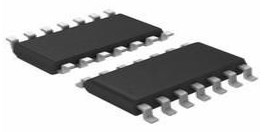 MIC2562A PCMCIA Switch: Pinout, Equivalent and Datasheet
MIC2562A PCMCIA Switch: Pinout, Equivalent and Datasheet28 February 2022672
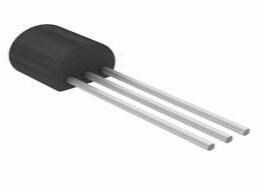 SS9014 NPN Transistor: Equivalent, Datasheet and Application
SS9014 NPN Transistor: Equivalent, Datasheet and Application29 October 202114077
![1SMB5923BT3G Zener Voltage Regulator: Pinout, Equivalent and Datasheet [Video]](https://res.utmel.com/Images/Article/46c3c894-7e2a-42f2-83a6-e6186e06548a.png) 1SMB5923BT3G Zener Voltage Regulator: Pinout, Equivalent and Datasheet [Video]
1SMB5923BT3G Zener Voltage Regulator: Pinout, Equivalent and Datasheet [Video]29 April 2022935
 IRFZ24N Transistor: Datasheet, Pinout, IRFZ24N MOSFET
IRFZ24N Transistor: Datasheet, Pinout, IRFZ24N MOSFET07 December 20218034
 ADA4817 Amplifier: Datasheet, Pinout and Applications
ADA4817 Amplifier: Datasheet, Pinout and Applications13 August 20212314
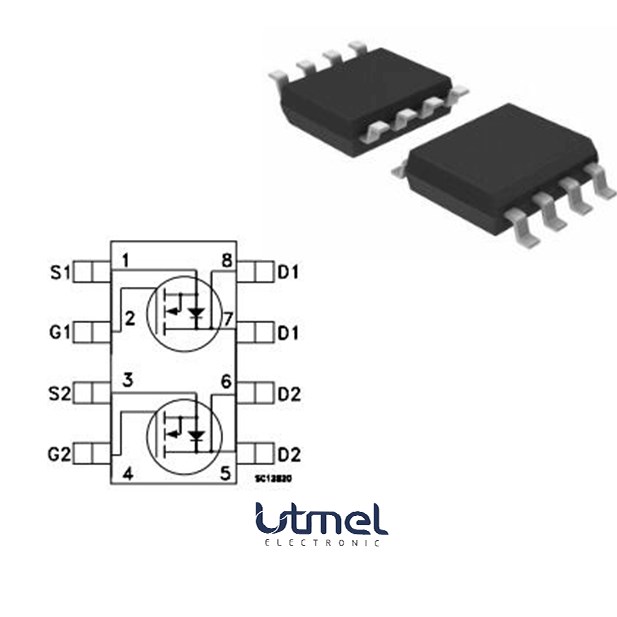 STS4DNF60L:datasheet, pinout and specifications
STS4DNF60L:datasheet, pinout and specifications11 March 2022358
 CP2102 Bridge Driver: Alternative, Pinout and Datasheet
CP2102 Bridge Driver: Alternative, Pinout and Datasheet14 July 20217052
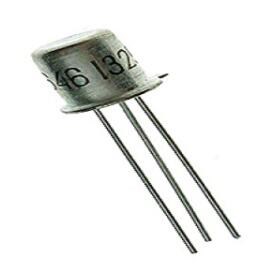 2N2646 PN Unijunction Transistor: Datasheet, Pinout and Equivalent
2N2646 PN Unijunction Transistor: Datasheet, Pinout and Equivalent21 October 202119466
 Latest Pushbutton Switch Designs Transforming Modern Devices
Latest Pushbutton Switch Designs Transforming Modern Devices11 July 2025868
 What is PCB Reflow? High-Speed Signal Reflow Path Analysis
What is PCB Reflow? High-Speed Signal Reflow Path Analysis24 November 20212652
 What are Comparators?
What are Comparators?03 December 20205060
 What is AMOLED?
What is AMOLED?25 April 20218259
 What is a Cascode Amplifier?
What is a Cascode Amplifier?27 March 202512796
 What is an Inverting Amplifier?
What is an Inverting Amplifier?25 April 20259191
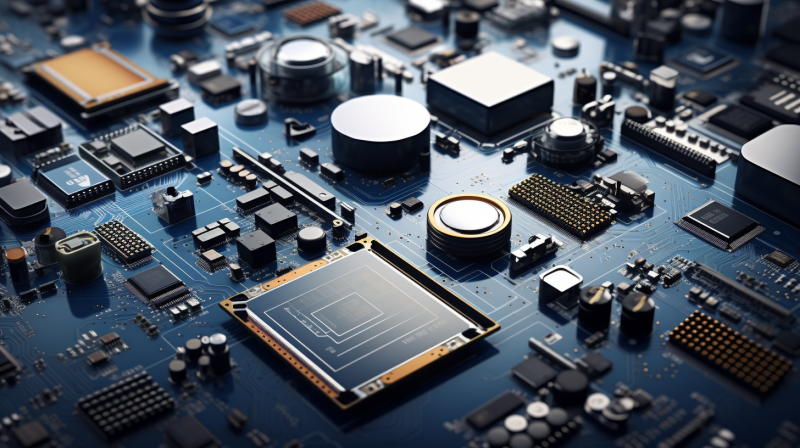 Semiconductor Market Predicted to Witness Significant Growth by 2023
Semiconductor Market Predicted to Witness Significant Growth by 202319 September 20231785
 Basics of Phase Change Memory
Basics of Phase Change Memory05 February 20217566
ON Semiconductor
In Stock: 62555
United States
China
Canada
Japan
Russia
Germany
United Kingdom
Singapore
Italy
Hong Kong(China)
Taiwan(China)
France
Korea
Mexico
Netherlands
Malaysia
Austria
Spain
Switzerland
Poland
Thailand
Vietnam
India
United Arab Emirates
Afghanistan
Åland Islands
Albania
Algeria
American Samoa
Andorra
Angola
Anguilla
Antigua & Barbuda
Argentina
Armenia
Aruba
Australia
Azerbaijan
Bahamas
Bahrain
Bangladesh
Barbados
Belarus
Belgium
Belize
Benin
Bermuda
Bhutan
Bolivia
Bonaire, Sint Eustatius and Saba
Bosnia & Herzegovina
Botswana
Brazil
British Indian Ocean Territory
British Virgin Islands
Brunei
Bulgaria
Burkina Faso
Burundi
Cabo Verde
Cambodia
Cameroon
Cayman Islands
Central African Republic
Chad
Chile
Christmas Island
Cocos (Keeling) Islands
Colombia
Comoros
Congo
Congo (DRC)
Cook Islands
Costa Rica
Côte d’Ivoire
Croatia
Cuba
Curaçao
Cyprus
Czechia
Denmark
Djibouti
Dominica
Dominican Republic
Ecuador
Egypt
El Salvador
Equatorial Guinea
Eritrea
Estonia
Eswatini
Ethiopia
Falkland Islands
Faroe Islands
Fiji
Finland
French Guiana
French Polynesia
Gabon
Gambia
Georgia
Ghana
Gibraltar
Greece
Greenland
Grenada
Guadeloupe
Guam
Guatemala
Guernsey
Guinea
Guinea-Bissau
Guyana
Haiti
Honduras
Hungary
Iceland
Indonesia
Iran
Iraq
Ireland
Isle of Man
Israel
Jamaica
Jersey
Jordan
Kazakhstan
Kenya
Kiribati
Kosovo
Kuwait
Kyrgyzstan
Laos
Latvia
Lebanon
Lesotho
Liberia
Libya
Liechtenstein
Lithuania
Luxembourg
Macao(China)
Madagascar
Malawi
Maldives
Mali
Malta
Marshall Islands
Martinique
Mauritania
Mauritius
Mayotte
Micronesia
Moldova
Monaco
Mongolia
Montenegro
Montserrat
Morocco
Mozambique
Myanmar
Namibia
Nauru
Nepal
New Caledonia
New Zealand
Nicaragua
Niger
Nigeria
Niue
Norfolk Island
North Korea
North Macedonia
Northern Mariana Islands
Norway
Oman
Pakistan
Palau
Palestinian Authority
Panama
Papua New Guinea
Paraguay
Peru
Philippines
Pitcairn Islands
Portugal
Puerto Rico
Qatar
Réunion
Romania
Rwanda
Samoa
San Marino
São Tomé & Príncipe
Saudi Arabia
Senegal
Serbia
Seychelles
Sierra Leone
Sint Maarten
Slovakia
Slovenia
Solomon Islands
Somalia
South Africa
South Sudan
Sri Lanka
St Helena, Ascension, Tristan da Cunha
St. Barthélemy
St. Kitts & Nevis
St. Lucia
St. Martin
St. Pierre & Miquelon
St. Vincent & Grenadines
Sudan
Suriname
Svalbard & Jan Mayen
Sweden
Syria
Tajikistan
Tanzania
Timor-Leste
Togo
Tokelau
Tonga
Trinidad & Tobago
Tunisia
Turkey
Turkmenistan
Turks & Caicos Islands
Tuvalu
U.S. Outlying Islands
U.S. Virgin Islands
Uganda
Ukraine
Uruguay
Uzbekistan
Vanuatu
Vatican City
Venezuela
Wallis & Futuna
Yemen
Zambia
Zimbabwe







